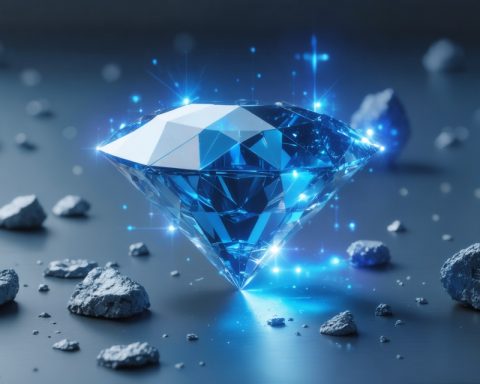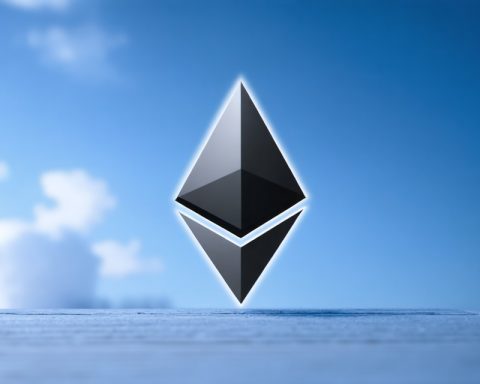NASA’s Mission to Combat Moon Dust
For astronauts heading to the Moon or Mars, dealing with lunar dust poses serious challenges. Researchers at NASA’s Kennedy Space Center in Florida are at the forefront, developing cutting-edge technologies to neutralize this threat.
One of the most promising innovations is the Electrodynamic Dust Shield (EDS), which is set for a critical test during the Artemis missions. This method utilizes electrical forces to effectively lift and eliminate lunar regolith, or dirt, from various surfaces during lunar operations.
The EDS technology will be included in a payload aboard NASA’s upcoming lunar mission, as part of the agency’s Commercial Lunar Payload Services (CLPS) initiative. The journey is scheduled to launch on January 15 from Kennedy Space Center, utilizing Firefly Aerospace’s Blue Ghost Lander.
For this groundbreaking technology, specialized transparent electrodes harness electric fields to tackle lunar dust’s troublesome grip on important equipment, from thermal radiators to astronauts’ gear. Left unchecked, this sharp, abrasive lunar dust—resembling tiny glass shards—can seep into sensitive parts of spacecraft, creating significant risks for missions.
NASA’s long-term lunar exploration strategy under the CLPS model emphasizes collaboration with commercial entities, paving the way for a new era in space logistics and exploration. By investing in innovative solutions like the EDS, NASA aims to ensure the safety and success of future missions.
Discover more about NASA’s initiatives at https://www.nasa.gov/clps.
NASA’s Innovative Solution to Lunar Dust: The Electrodynamic Dust Shield
Introduction
NASA is spearheading efforts to tackle the challenges posed by lunar dust as astronauts prepare for future missions to the Moon and Mars. The abrasive and sharp nature of lunar regolith, which resembles tiny shards of glass, presents significant risks to both personnel and equipment. To address this, researchers at NASA’s Kennedy Space Center in Florida have developed an innovative solution known as the Electrodynamic Dust Shield (EDS).
What Is the Electrodynamic Dust Shield (EDS)?
The Electrodynamic Dust Shield is a cutting-edge technology designed to neutralize the clingy and harmful properties of lunar dust through the use of electrical forces. This innovative method effectively lifts and removes regolith from various surfaces, enhancing the operation and safety of lunar exploration missions.
Key Features of EDS
– Electric Field Utilization: EDS employs specialized transparent electrodes that generate electric fields to dislodge lunar dust from equipment surfaces. This ensures that sensitive instruments, thermal radiators, and astronauts’ gear remain unencumbered and functional.
– Robust Testing: EDS technology is set to undergo critical testing during the upcoming Artemis missions. It will be featured in a payload launched as part of NASA’s Commercial Lunar Payload Services (CLPS) initiative.
Upcoming Launch
NASA’s next lunar mission is scheduled to lift off on January 15, featuring the EDS on Firefly Aerospace’s Blue Ghost Lander. This represents a significant step in the agency’s overarching strategy to facilitate sustainable lunar exploration.
Pros and Cons of EDS
Pros:
– Enhanced Safety: By removing hazardous dust, EDS helps to protect astronauts and spacecraft components, reducing the risk of operational failures.
– Innovation in Space Exploration: The collaboration with commercial partners under the CLPS model opens avenues for groundbreaking technologies, ensuring progress in space logistics.
Cons:
– Test Phase Uncertainty: As a new technology, EDS’s effectiveness in diverse lunar conditions remains to be fully validated through upcoming tests.
– Dependency on Electricity: The system’s reliance on electrical fields necessitates careful power management, particularly in the harsh lunar environment.
Market Trends and Innovations in Space Missions
NASA’s initiative highlights a broader trend in space exploration that emphasizes public-private partnerships. By collaborating with commercial entities, NASA is not only driving innovation but also creating a sustainable model for future space missions. This evolution in partnerships is critical as humanity aims to establish a long-term presence on the Moon and investigate the potential for human exploration of Mars.
Security Aspects and Controversies
While the prospect of addressing lunar dust through the EDS presents exciting opportunities, it also raises questions regarding the long-term impacts of human presence on the Moon and potential contamination of extraterrestrial environments. As space agencies venture beyond Earth, it becomes imperative to weigh the benefits of technological advancements against the risks of altering celestial bodies.
Conclusion
NASA’s Electrodynamic Dust Shield technology represents a promising solution to one of the significant challenges facing lunar missions. Through rigorous testing and collaboration with commercial partners, NASA is advancing its mission to ensure safe and effective space travel. As we look forward to upcoming launches and further innovations, the journey toward sustainable lunar exploration continues.
Discover more about NASA’s initiatives at NASA CLPS.

















